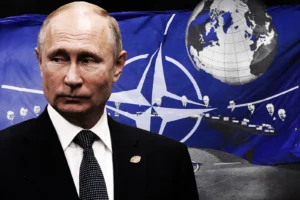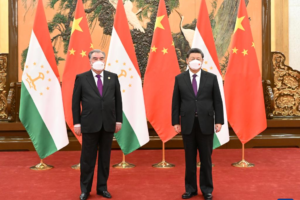India, led by Prime Minister Narendra Modi , successfully hosted the G20 Summit on Saturday, 9 -10 September 2023.
Narendra Modi used the name “Bharat” to represent his country at the G20 Summit . This increases speculation of a change in the name of the South Asian country.
As one of the world’s most influential leaders, Narendra Modi’s profile depicts his long journey from a poor child from a humble background to becoming the Prime Minister who leads the country with the largest population in the world.
Start from scratch
Narendra Modi was born on September 17, 1950, in Vadnagar, a small town in Gujarat, India. He is the third of six children and his family comes from an underprivileged background.
His father sold tea at a small tea stall at the local railway station, and Narendra Modi helped his father at the tea stall during his childhood. This reflects the humble and austere beginnings in life for Narendra Modi.
Reporting from his personal page, Narendra Modi has shown an interest in meditation and asceticism since childhood. He even stopped consuming salt, chilies, oil and sugar.
Reading the works of Swami Vivekananda provided the foundation for his mission to realize Swami Vivekananda’s dream of “Jagad Guru Bharat” (Indian World Teacher).
From Activist to Political Leader
At the age of 17, Narendra Modi made an extraordinary decision that changed the course of his life. He left his home and traveled around India. After two years of traveling across the country, he decided to join the Rashtriya Swayamsevak Sangh (RSS), a social and cultural organization working for the economic, social, and cultural development of India.
His first role in the RSS began attending local youth meetings. It was here that he met one of the biggest influences in his life, Lakshmanrao Inamdar popularly known as ‘Vakil Saheb’.
In 1972, Narendra Modi became the Pracharak of Gujarat, giving his full time to the RSS. At the same time, he successfully completed a bachelor’s degree in political science. Later, he became part of major events in the social movement in Gujarat.
When Narendra Modi arrived in Ahmedabad, the city was experiencing severe communal riots. Across the country, the Congress Party, which had already suffered a setback in the 1967 Lok Sabha elections, was split between Indira Gandhi’s faction and a syndicate led by Morarji Desai of Gujarat.
But the joy of the Congress Party and Indira Gandhi quickly faded. Communal riots and corruption of the Congress government in Gujarat reached new heights. The big dream for ‘Garibi Hatao’ turned into ‘Garib Hatao’. The condition of the poor worsened, and in Gujarat, suffering was exacerbated by widespread famine and sharp price increases. Long queues for basic commodities are a common sight in the state. There is no relief for the common people.
When Emergency was declared at midnight on 25 June 1975 by Prime Minister Indira Gandhi, Narendra Modi became active in the anti-Emergency struggle. He became General Secretary of the Gujarat Lok Sangharsh Samiti (GLSS), which was responsible for coordinating between activists across the state of Gujarat. This task was difficult given the stringent scrutiny imposed on anti-Congress leaders and activists.
Career Becoming a Leader
Reporting from the PMIndia website , Narendra Modi was the first Indian Prime Minister born after India’s independence, and he served as Prime Minister of India from 2014-2019, and won the general election again in 2019 for a second term. Previously, he was also the Chief Minister (Governor) of Gujarat who served from October 2001-May 2014.
Under Shri Modi’s leadership, the Bharatiya Janata Party (BJP) achieved landslide victories in the 2014 and 2019 parliamentary elections, securing an absolute majority on both occasions.
In 2015, Narendra Modi played a key role in the COP21 Conference in Paris, where climate change and the environment were key topics. India is committed to reducing greenhouse gas emissions in line with sustainable economic development.
During his political career, Narendra Modi has received various international honors and awards reflecting his outstanding contributions in areas such as environment, peace and development.
One of the highest awards he received was the “Champions of the Earth Award” from the United Nations (UN).
Narendra Modi is also known as a very techno-savvy leader and is active on various social media platforms, which he uses to communicate with the people of India and promote government initiatives.
Source : Tempo.co
















